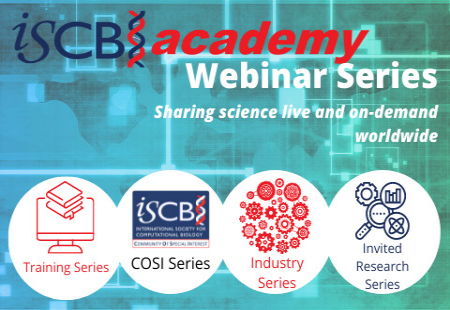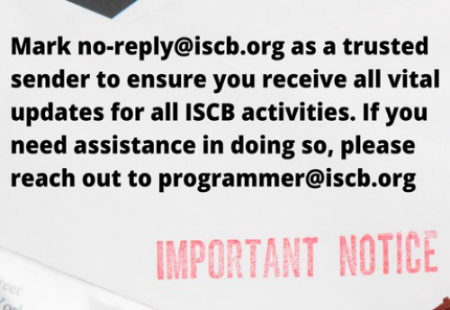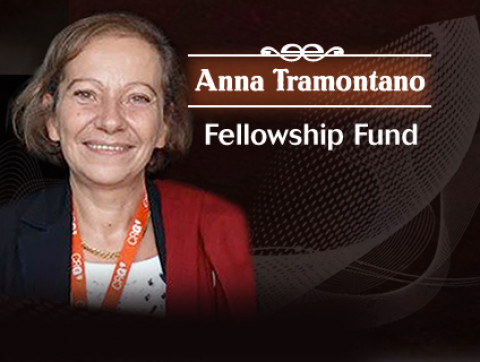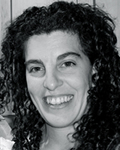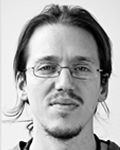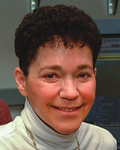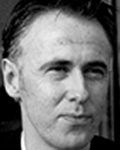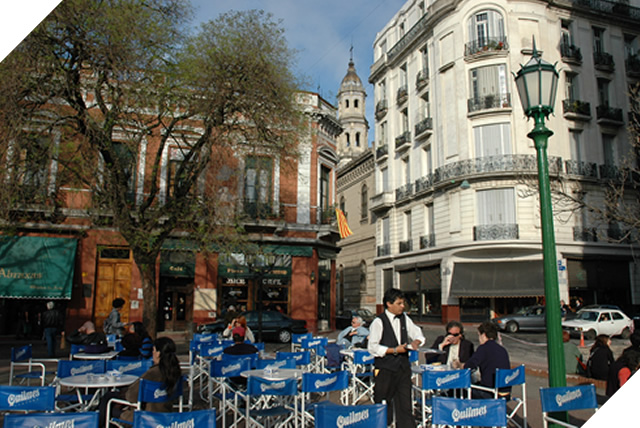AGENDA AT A GLANCE
Links within this page: Monday, Nov 21 | Tuesday, Nov 22 | Wednesday, Nov 23
| MONDAY – 21 November | ||
| START TIME | END TIME | SESSION TYPE |
| 08:00 | 19:30 | Registration |
| 08:45 | 09:00 | Morning Welcome |
| 09:00 |
10:00 |
Keynote Presentation: A Mechanistic View of Oncogenic K-Ras Biology Ruth Nussinov, PhD, National Cancer Institute Maryland, United States |
| 10:00 | 10:30 | Coffee Break |
| - top - | ||
| 10:30 | 12:30 | Protein Session |
| 10:30 | 10:55 | Biomolecular Dynamics in Complex in vivo Environments - Garegin Papoian |
| 10:55 | 11:10 | Discovery of Protein Isoforms for Different Stages of Prostate Cancer - Luis Rueda |
| 11:10 | 11:25 | Analysis of cell-cycle regulatory linear motifs bound by the pRb retinoblastoma tumor suppressor - Lucia Chemes |
| 11:25 | 11:40 | Identification and Substantiation of Specificity Determining Residue Networks using small Datasets and MI-promiscuity - Facundo Orts |
| 11:40 | 11:55 | Residue-covariation networks cluster similar functional domains - Franco Simonetti |
| 11:55 | 12:10 | Validation of Assembly and alignment-free method for chloroplast next generation sequences data - Raúl Martín Amado Cattáneo |
| 12:10 | 12:20 | SwissProt Select: The New Protein Superfamily Database for Reliable Function Assignation - Nicolás Stocchi |
| 12:20 | 12:30 | DEPICTViz - Differential Expression and Protein InteraCTions Visualization Tool - Nalvo F. Almeida |
| 12:30 | 14:30 | Lunch on Own |
| - top - | ||
| 14:30 | 16:30 | Data Session |
| 14:30 | 14:50 | Tech Talk, EMBL-EBI Overview of EMBL-EBI Services and How We Work with Industry - Dominic Clark |
| 14:50 | 15:10 | Systematic assessment of multi-gene predictors of pan-cancer tumour sensitivity to drugs exploiting gene expression data - Pedro J. Ballester |
| 15:10 | 15:30 | Drug targets prioritization for neglected diseases - Videla Santiago |
| 15:30 | 15:45 | A Data-Driven Approach to Estimating the Number of Clusters in Hierarchical Clustering - Antoine Emil Zambelli |
| 15:45 | 16:00 | A novel approach for highly-diverse multi-omics data fusion applied to tomato germplasm selection - Georgina Stegmayer |
| 16:00 | 16:15 | Pasteur_galaxy: An open and sustainable Galaxy instance for NGS data analysis - Oussama Souiai |
| 16:15 | 16:30 | Graphing genomes in 2D, applications of multivariate statistics on the genomic composition - Maria Camila Martinez |
| 16:30 | 17:00 | Coffee Break |
| 17:00 | 18:00 | Keynote Presentation: Coding for running speed and computing displacement in the mammalian brain's GPS Emilio Kropff, PhD, Researcher at the National Research Council (CONICET), Leloir Institute IIBBA, Buenos Aires, Argentina |
| 18:00 | 19:30 | Networking and Posters - Odd number posters presentations |
| 19.30 | 22:00 | VizBI Plus Event & Cocktail |
| - top - | ||
| TUESDAY – 22 November | ||
| START TIME | END TIME | SESSION TYPE |
| 08:30 | 19:30 | Registration |
| 08:45 | 09:00 | Morning Welcome and Announcements |
| 09:00 | 10:00 | Keynote Presentation: Birdsong to study neural control and biomechanics in a learned sensorimotor task Ana Amador, PhD University of Buenos Aires and IFIBA, National Research Council (CONICET), Buenos Aires, Argentina |
| 10:00 | 10:30 | Coffee Break |
| - top - | ||
| 10:30 | 12:30 | Machine Learning and Data Mining Session |
| 10.30 | 10.50 | Tech-Talk CITES, The First High-Tech Incubator in Latin America Starting UP Bioinformatics - Gerardo Marchesini, Chief Technology Officer |
| 10:50 | 11:10 | Ranking factors involved in diabetes remission after bariatric surgery using machine-learning integrating clinical and genomic biomarkers - Søren Brunak |
| 11:10 | 11:30 | Advanced data mining reveals a non-canonical mode of interaction for MHC class II ligands - Morten Nielsen |
| 11:30 | 11:50 | Novel microRNA discovery from genome-wide data: a computational pipeline with unsupervised machine learning - Georgina Stegmayer |
| 11:50 | 12:03 | NetPhosPan: a pan specific predictor for phosphorylation site predictions - Emilio Fenoy |
| 12:03 | 12:16 | Machine Learning Tools to Computationally Identify Genomic Elements - Melissa Woghiren |
| 12:16 | 12:30 | TAXOFOR: Taxonomic Assignment of 16S rDNA sequences using Fourier Analysis - Guillerm Luque y Guzman Saenz |
| 12:30 | 14:30 | Lunch on Own |
| - top - | ||
| 14:30 | 16:30 | Disease Session |
| 14:30 | 14:50 | Multi-Cohort Analysis Identifies Cross-Tissue Gene Signature to Predict Lung Function and TFS in Patients with Idiopathic Pulmonary Fibrosis - Scott Madeleine |
| 14:50 | 15:10 | Differential network analysis for the identification of common and specific regulatory mechanisms between idiopathic dilated cardiomyopathy and ischemic cardiomyopathy - Mariana Recamonde-Mendoza |
| 15:10 | 15:30 | A bioinformatics approach shows significant overlap of molecular pathology in early preeclampsia with endometrial diseases - Maria Rabaglino |
| 15:30 | 15:45 | Diagno: an online Clinical Genomics Diagnosis tool - Patricio Yankilevich |
| 15:45 | 16:00 | MultiOmics: an R package to infer genomics and epigenomics mechanisms involved with cancer disease progression - Martin Abba |
| 16:00 | 16:15 | In silico prediction of biological targets of small molecules by a chemical similarity approach - Andreas Schüller |
| 16:15 | 16:30 | Transcriptomic analysis of drug resistant isolates of the parasitic trematode Fasciola hepatica - Jose Tort |
| 16:30 | 17:00 | Coffee Break |
| 17:00 | 18:00 | EMBO Lecture Keynote Presentation: Systematic Patterns in Millions of 20 Yearlong Individual Patient Disease Trajectories Søren Brunak, PhD Professor, Research Director Novo Nordisk Foundation Center for Protein Research, University of Copenhagen The EMBO Lecture |
| 18:00 | 19:30 | Networking and Posters - Even numbered poster presentations |
| - top - | ||
| WEDNESDAY – 23 November | ||
| START TIME | END TIME | SESSION TYPE |
| 08:00 | 12:30 | Registration |
| 08:45 | 09:00 | Morning Welcome and Announcements |
| 09:00 | 10:00 | Keynote Presentation: Data Visualization in Bioinformatics: Exploring the 'Dark' Proteome Sean I. O’Donoghue, PhD, CSIRO & Garvan Institute of Medical Research, Sydney, Australia |
| 10:00 | 10:30 | Coffee Break |
| - top - | ||
| 10:30 | 12:30 | Genes Session |
| 10:30 | 10:50 | Tech Talk: Heritas Bioinformatics for clinical diagnostics - Martín Vazquez, Chief Scientific Officer |
| 10:50 | 11:15 | Extreme learning machines for discovering gene regulatory networks from temporal profiles of expression - Mariano Rubiolo |
| 11:15 | 11:40 | Dynamics of tRNA fragments and their targets in aging mammalian brain - Andrey Grigoriev |
| 11:40 | 12:05 | Exploring the human virome, new tools, new insights - Alejandro Reyes AND Seeking informative regions in viral genomes - Jaime Leonardo Moreno |
| 12:05 | 12:17 | Bioinformatic sequence analysis tools for the search for new short peptide in "non-coding" sequences - Luciana Ines Escobar |
| 12:17 | 12:30 | Prediction of microRNA targets in Echinococcus - Natalia Macchiaroli |
| 12:30 | 14:30 | Lunch on Own |
| - top - | ||
| 14:30 | 16:30 | Systems Session |
| 14:30 | 14:53 | Bioinformatic mapping of microRNAs related with cervical cancer on Human Latinoamerican Genomic Variants - Milena Guerrero Flórez |
| 14:53 | 15:15 | An integrative method to unravel the host-parasite interactome: an orthology based approach - Yesid Cuesta Astroz |
| 15:15 | 15:30 | Universal attenuators and their interactions with feedback loops in gene regulatory networks - Dianbo Liu |
| 15:30 | 15:45 | Combining miRNA and their regulators to understand the formation of diapause as transgenerational defense against pathogens in C. elegant - Alberto Jesus Martin |
| 15:45 | 16:00 | Cellular Information Processing: pre-equilibrium signalling, cooperatively effects and membrane receptor trafficking - Federico Sevlever |
| 16:00 | 16:15 | Evaluation of Anti-biofilm activity of synthetic peptides analogous to human cathelicidin LL-37 in clinical isolates of Staphylococcus app - Fredy Alexander Guevara Agudelo |
| 16:15 | 16:30 | From in silico modelling to comprehension of agroecosystems: towards a complex index to study of microbial diversity and its relation of soil health - Arsenio J. Rodriguez |
| 16:30 | 17:00 | Awards and Closing |

